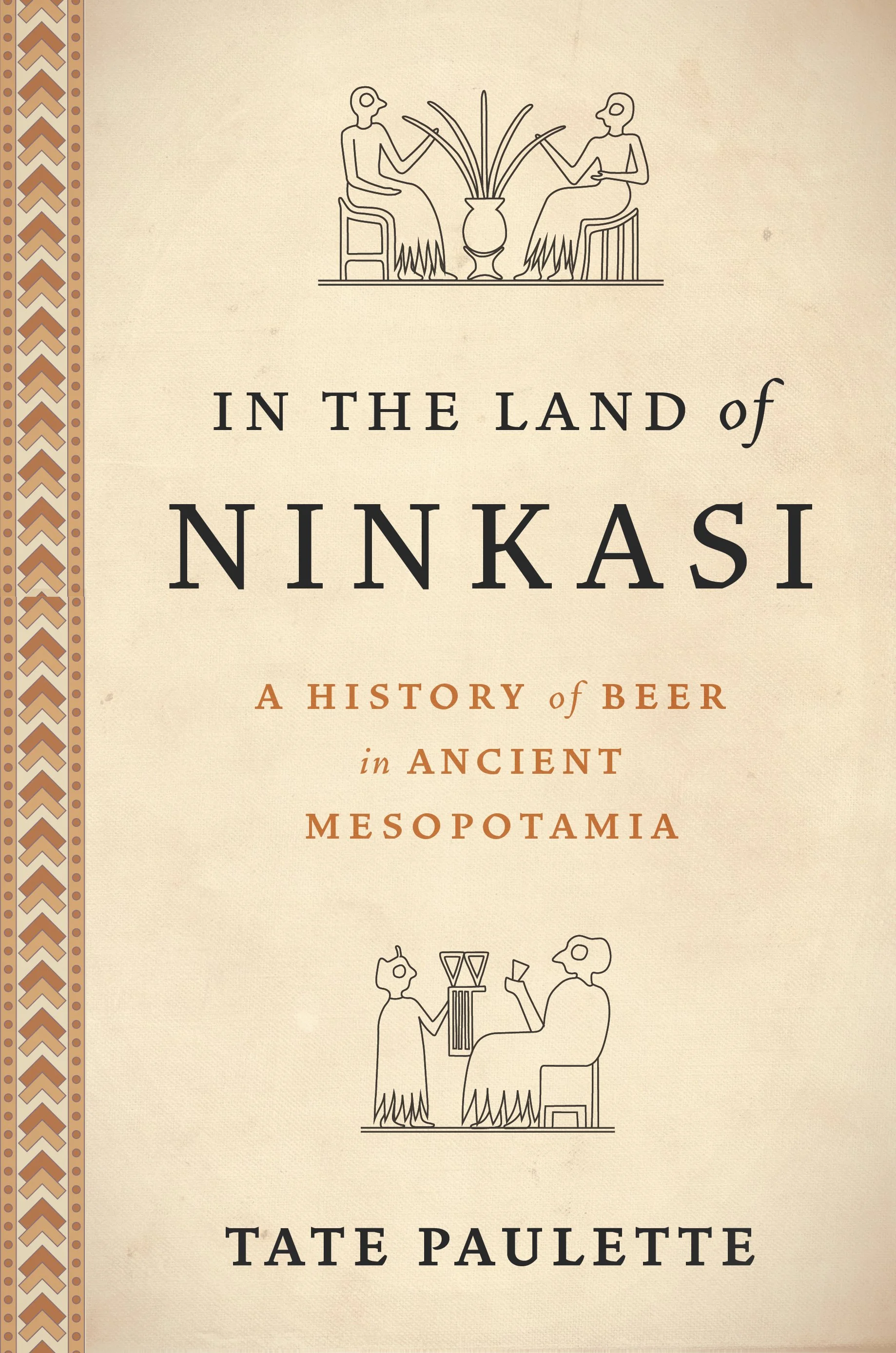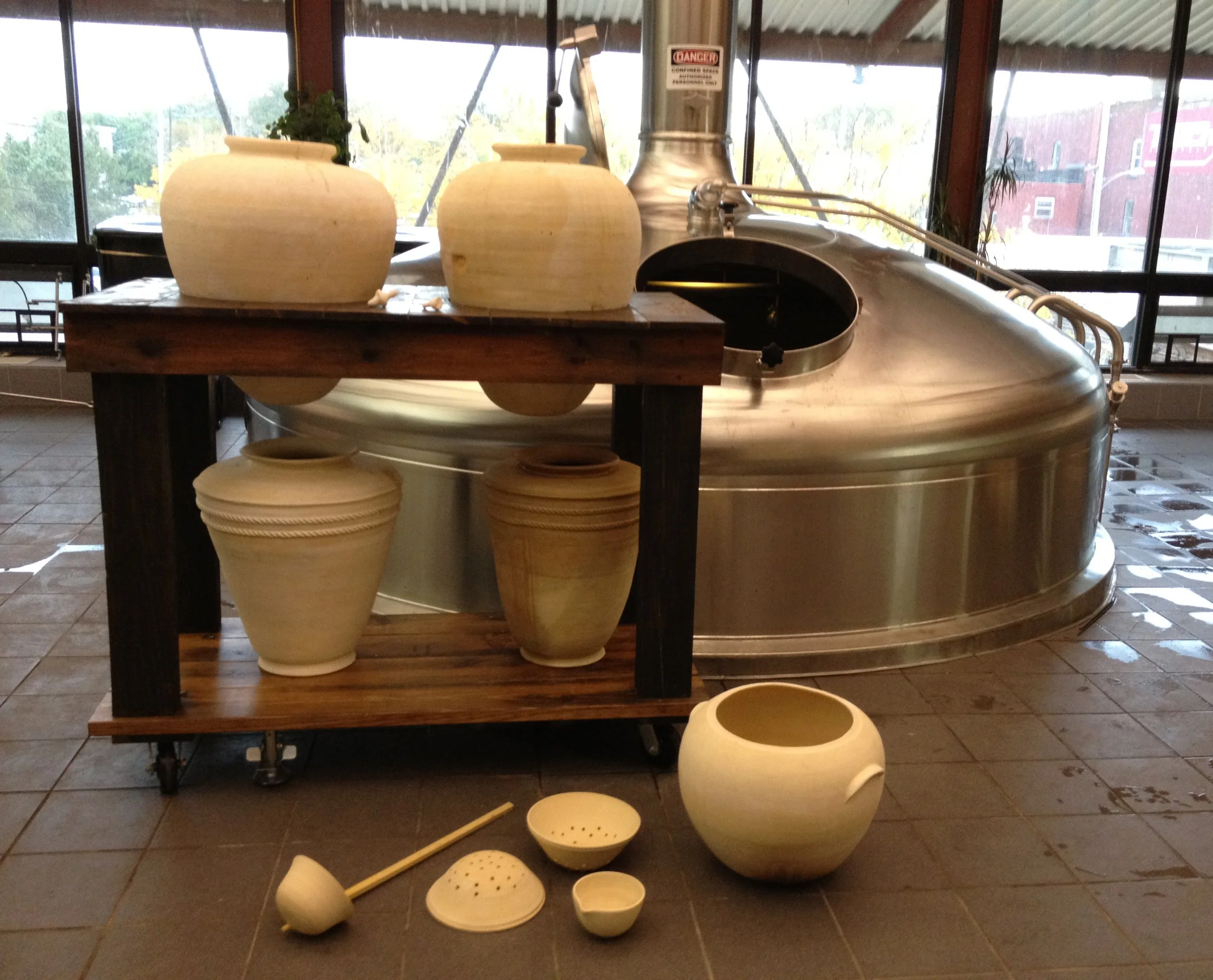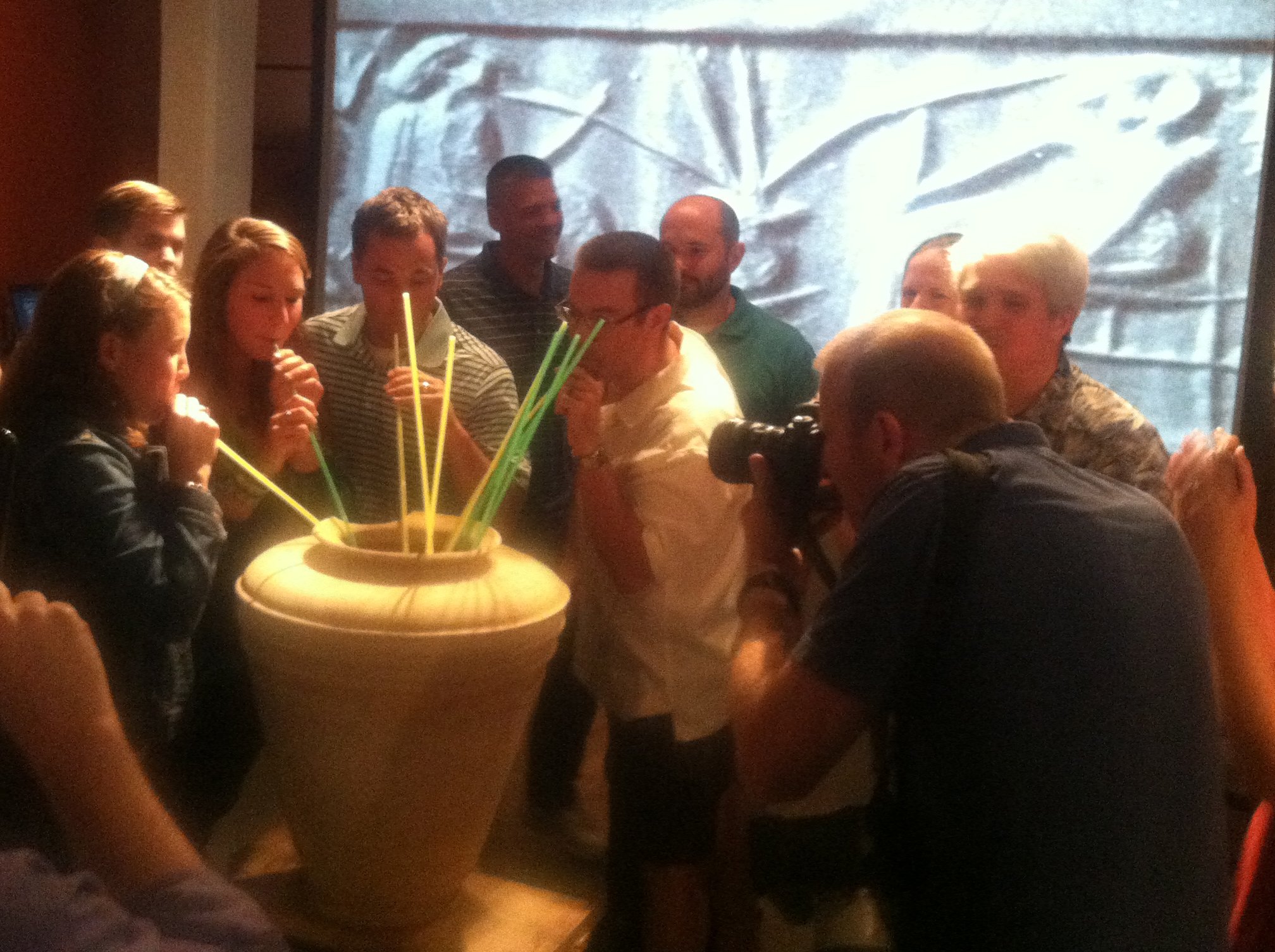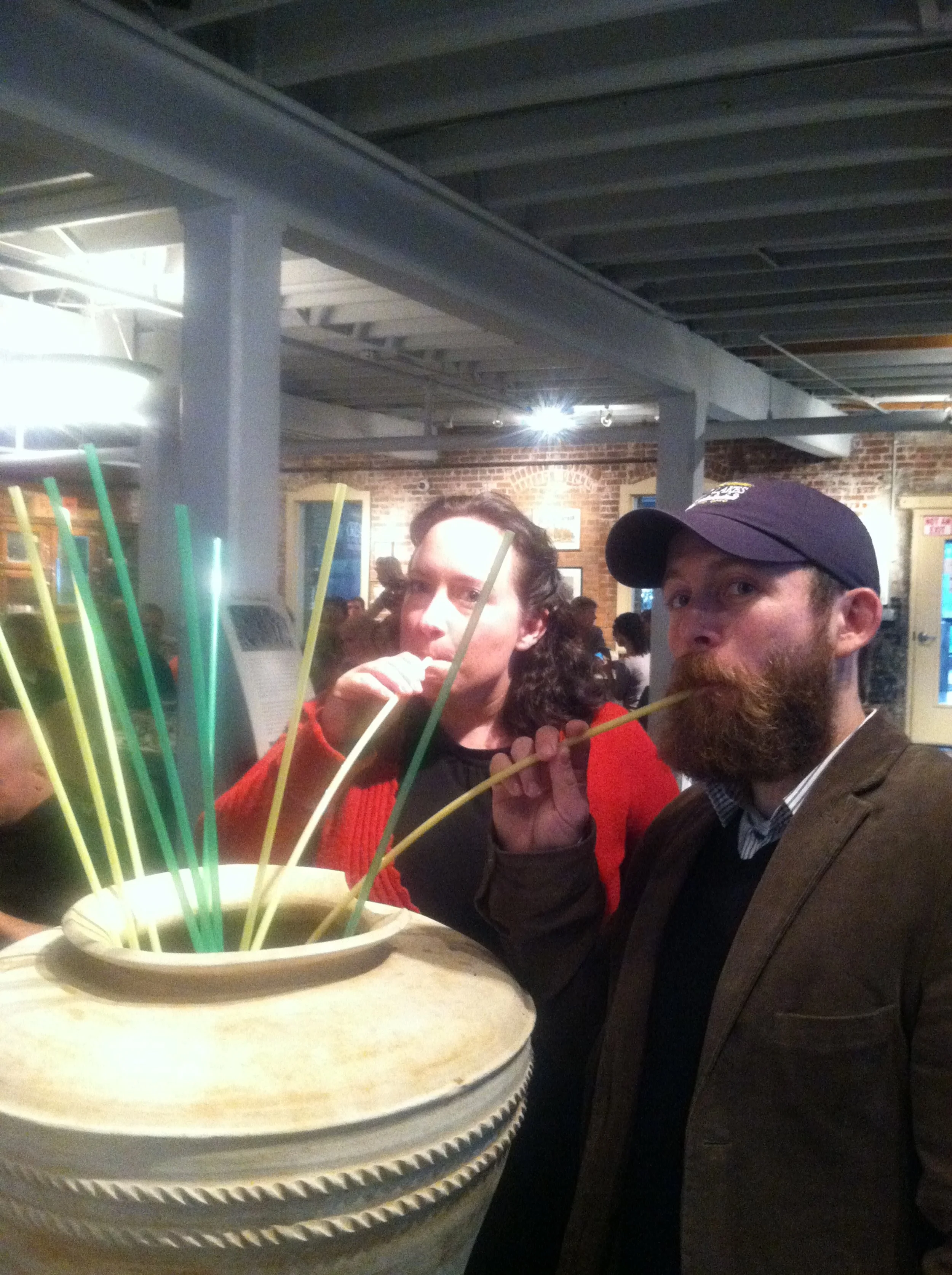In the Land of Ninkasi
Adding bappir to initiate fermentation. (Photo by Brian Zimerle)
A History of Beer in Ancient Mesopotamia
By Weam Namou
“The people of ancient Mesopotamia knew how to appreciate a good beer,” writes Tate Paulette in his book, In the Land of Ninkasi: A History of Beer in Ancient Mesopotamia (Oxford University Press).
Paulette, an archaeologist and Associate Professor at North Carolina State University, has conducted extensive fieldwork across several countries, including Syria, Iraq, Egypt, Turkey, Cyprus, Scotland, and the United States. But what exactly led him to write a book on the history of beer in ancient Mesopotamia?
Tate Paulette (Photo by Jesse Grossman)
“I came to the topic by way of a collaborative effort to recreate ancient Mesopotamian beer using authentic ingredients, equipment, and brewing processes,” he said. At the time, he was working on a dissertation about grain storage and, more broadly, about the politics of food in Early Bronze Age (3000–2000 BC) Mesopotamia.
Tate Paulette's recently published book tells the story of the world’s first great beer culture.
Along with a fellow grad student, Mike Fisher, they had just made some tentative steps toward exploring the topic of beer on their own when they heard about this experimental brewing project bringing together brewers from Great Lakes Brewing Co. in Cleveland and a group of scholars from the Institute for the Study of Ancient Cultures (then known as the Oriental Institute) at the University of Chicago.
“We signed on enthusiastically and ended up serving as the primary go-betweens, linking up the two teams throughout a multiyear process of experimentation,” he said.
The resulting book highlights beer’s centrality in Mesopotamian culture, illustrating its role in social gatherings, religious rituals, and even the Epic of Gilgamesh. For instance, in the story, Paulette notes, “Before he can travel to Uruk and confront Gilgamesh, the wild man Enkidu has to be extracted from the animal realm and transformed into a civilized human being.” As part of this transformation, Enkidu must learn to eat bread and drink beer, underscoring the beverage’s importance.
Beer was consumed by people of all social classes—from kings and queens to commoners—at banquets, taverns, and homes. It was a crucial part of feasts, gift-giving ceremonies, and even distributed to workers and prisoners. Paulette states, “Beer occupied a key position within Mesopotamian culture,” further illustrating its widespread significance.
“Beer was served at the elite banquets that appear regularly in the artistic record, especially during the Early Dynastic period,” said Paulette.
In these artistic scenes, beer was consumed through straws, typically from a shared vessel. Most straws were likely made of reed, which does not survive well in archaeology, but some metal straws have been found. Small metal filters, used to strain solid matter from the beer, were attached to the ends of reed straws.
One of the most substantial pieces of evidence for beer production is the Hymn to Ninkasi which describes the brewing process and celebrates Ninkasi, the goddess of beer. While this hymn provides valuable insights, Paulette says, “We should be cautious in placing too much weight on this one text,” emphasizing that a broader range of written records, including tax documents and brewing contracts, also contribute to our understanding.
Identifying physical evidence of brewing has proven challenging, but excavations have uncovered probable breweries and taverns. Organic residue analysis suggests that many households brewed their own beer. Brewing equipment, especially vessels with holes in their bases, indicates brewing activities and further supports the cultural importance of beer.
The significance of Ninkasi in Mesopotamian religion is also explored. Although evidence of her worship is limited, she frequently appears in literature as the quintessential brewer. Paulette explains, “Beyond the Hymn to Ninkasi, we only have limited evidence for the worship of Ninkasi,” highlighting her role in the cultural narrative.
Paulette details the brewing process, noting that ancient brewers primarily used malted barley along with other grains, but did not use hops. The exact ingredients and brewing techniques remain subjects of debate among scholars. He adds, “We can certainly see both similarities and differences” when comparing ancient methods to modern practices.
Beer played an essential role in social interactions, from elite banquets to everyday gatherings. One notable feast, called “the pouring of beer,” reflects its importance in rituals and communal events. The palace and temple institutions maintained their breweries, while taverns served as commercial establishments selling beer.
Both men and women participated in brewing, but the profession was predominantly male. Paulette notes, “the profession seems to have been primarily occupied by men,” although women were more often involved in homebrewing and tavern-keeping. He suggests parallels with later brewing histories, such as in England, where the industry transitioned from female-dominated household brewing to a male-dominated commercial industry.
As for the beer culture’s evolution, Paulette points out that significant changes occurred during the first millennium BCE when the terms for “beer” began to encompass date wine as well.
The book does not address what happened to the beer culture in the region over time, particularly with the rise of different political or cultural influences. The Persian conquest during the Achaemenid Empire (c. 550–330 BCE) introduced competition from wine, which became favored in Persian society. Nevertheless, beer remained popular among the lower classes.
The Hellenistic Period (c. 331–141 BCE) saw Greek cultural influences alter brewing methods, further diminishing beer’s status as it became associated with lower classes compared to the elite preference for wine. This trend continued into the Roman Period, where wine solidified its dominance.
The Islamic conquest in the 7th century CE brought about a significant decline in beer production and consumption due to prohibitions against alcohol. However, during this time, Christians were allowed to sell beer, becoming the primary vendors in a predominantly abstinent society. While beer traditions persisted in some areas, they often remained covert due to prevailing cultural restrictions.
In the Land of Ninkasi not only highlights the significance of beer in everyday life but also details the enduring legacy of Ninkasi, the goddess who “satisfies the heart.” With its exploration of brewing methods and cultural practices, the book invites readers to appreciate the complexities of ancient Mesopotamian society and its relationship with this beloved beverage.
“In my book,” says Paulette, “I borrow a line from this text, as translated by Miguel Civil, and propose that we bring this line back to life as a toast: ‘May Ninkasi live together with you!’”
Above: Tasting event at Martha’s Bar in Philadelphia (Photo by Stephen Lyford); Tasting event at Great Lakes Brewing Co. in Cleveland (Photos by Tate Paulette); Adding date paste (Photo by Tate Paulette); bottom left and middle Replica brewing equipment (Photo by Tate Paulette); Adding bappir to initiate fermentation (Photo by Brian Zimerle).















